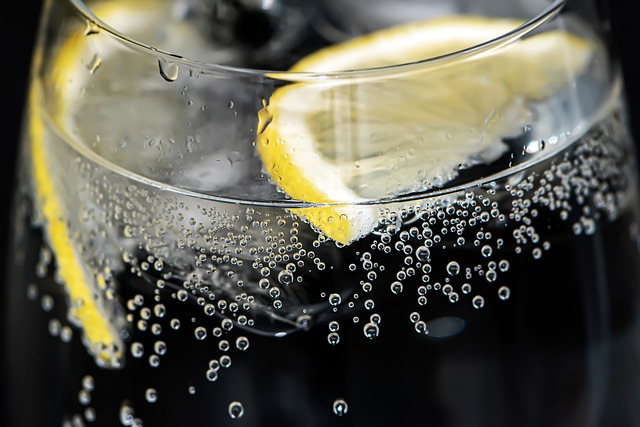Cold plunge therapy, involving immersing in 50-60°F water post-exercise, offers numerous benefits for athletes. It reduces metabolic waste buildup, enhances blood circulation with oxygen and nutrients for faster healing, prevents injuries by easing muscle spasms and inflammation, ultimately supporting improved athletic performance and recovery times. Incorporating regular cold plunges into training routines can significantly benefit athletes' recovery and maintain their peak performance, making it a popular game-changer in the world of athletics.
Discover the power of cold plunge therapy as a game-changer in athletic recovery and injury prevention. This natural, effective method involves immersing yourself in cold water to reduce inflammation and promote muscle healing. In this article, we explore how athletes can harness the benefits of cold water immersion post-workout, enhance performance, and minimize the risk of future injuries. From understanding the science behind it to incorporating cold plunges into your routine, we’ve got you covered with practical strategies for optimal athletic health.
Understanding Cold Plunge Therapy for Athletes
Cold plunge therapy has gained significant traction in the athletic recovery realm. This involves submerging oneself in water significantly colder than body temperature, typically between 50-60°F (10-15°C), for a short period after intense physical activity. Athletes and sports professionals embrace cold water therapy for its potent benefits in promoting muscle recovery, reducing inflammation, and alleviating post-workout soreness.
Regular cold plunges stimulate vasoconstriction, constricting blood vessels to reduce blood flow to the extremities and core. This process helps minimize metabolic waste buildup in overworked muscles. As athletes return to warmer temperatures, vasodilation occurs, enhancing blood circulation with oxygen and nutrients to facilitate faster healing and improved athletic performance. The cold therapy for injury prevention aspect is equally compelling, as it can help mitigate soft tissue injuries by decreasing muscle spasms and inflammation.
Benefits of Cold Water Immersion Post-Workout
Cold water immersion, especially after intense workouts, offers a plethora of benefits for athletes looking to enhance their recovery and athletic performance. This practice, often known as cold plunge therapy or even ice baths for muscle recovery, involves submerging oneself in freezing (or near-freezing) water post-exercise. The shock of the cold temperature triggers a cascade of physiological responses that are beneficial for active individuals.
One of the key advantages is its impact on reducing inflammation and promoting faster muscle recovery. Cold therapy restricts blood flow to damaged muscles, which minimizes swelling and pain, common issues after strenuous athletic activities. By immersing yourself in cold water post-workout, you can help your body repair and rebuild more efficiently, leading to quicker recovery times and improved athletic performance over time.
The Role of Cold Therapy in Athletic Performance and Injury Prevention
Cold therapy, particularly through methods like cold plunges or ice baths, has emerged as a powerful tool in athletic performance and recovery. By immersing oneself in cold water post-workout, athletes can reap numerous benefits that extend beyond mere relaxation. The shock of cold water triggers a series of physiological responses, including vasoconstriction (narrowing of blood vessels) and reduced metabolic rate at the muscle level, which helps to minimize inflammation and delay muscle fatigue. This process is crucial for athletes looking to enhance their performance and shorten recovery times between intense training sessions.
Regular cold plunge therapy plays a significant role in injury prevention by promoting faster healing and reducing muscle soreness. The exposure to cold water helps decrease nerve sensitivity, providing natural pain relief. Furthermore, it aids in the removal of metabolic waste products from muscles, which can lead to reduced muscle stiffness and improved flexibility. As athletes continue to push their physical limits, incorporating post-workout cold water immersion into their routines becomes an increasingly valuable strategy for maintaining peak performance and staving off injuries.
Effective Strategies for Incorporating Cold Plunges into Your Routine
Incorporating regular cold plunges into your routine is a powerful strategy for both athletic recovery and injury prevention. For athletes, cold water therapy—such as post-workout ice baths or cold water immersions—has been shown to significantly reduce muscle soreness and inflammation, accelerating recovery times. By subjecting the body to extreme cold after intense exercise, you can initiate a process that enhances blood circulation, flushing out metabolic waste products and delivering oxygen-rich blood to sore muscles.
Effective strategies for integrating cold plunges include scheduling them within 30 minutes of finishing your workout or competition. The duration should be tailored to your tolerance; starting with shorter periods (around 10-15 minutes) is advisable. To maximize benefits, ensure the water temperature is between 50–60°F (10–15°C). Combining cold plunges with other recovery methods like stretching, foam rolling, and proper nutrition can further enhance athletic performance and reduce the risk of injuries.
Regular cold plunge therapy offers a powerful tool for athletes to enhance athletic performance and prevent injuries. By immersing oneself in cold water post-workout, the body initiates a series of beneficial responses, including reduced inflammation, improved muscle recovery, and enhanced blood flow. This ancient practice has gained modern popularity as a game-changer in sports medicine, providing an effective and accessible way to support active individuals’ overall well-being. Incorporating cold plunges into your routine can be a simple yet profound step towards achieving optimal physical performance and minimizing the risk of injuries.
